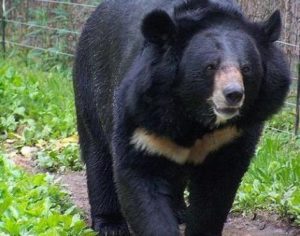Dear Mr. or Ms. Evolutionary Biologist, Thank you in advance for your time, of which I hope not to waste too much. If you happen to be an ursinologist, your assistance will be especially welcome. Before I start, I think it it is only fair that you know the audience. I should properly identify myself as a Christian, so that you will be aware of the possibility my confirmation bias (which I believe everyone has) could unduly affect my interpretation of published scientific evidence. I also believe in supernatural creation, because I am well aware that life cannot evolve until it exists. However, I typically describe myself as theist-agnostic. By that, I simply mean that I believe in the Judeo-Christian supernatural creator God called Yahweh, and I also believe that Jesus was the promised, crucified, and resurrected Messiah. That's the "theist" part of the descriptor. On the other hand, I also realize that I actually don't know very much when it comes to answering the existential questions. That's the reason for the "agnostic" qualifier...I can't even claim that my beliefs constitute knowledge, because sometimes beliefs turn out to be wrong. Pleading agnosticism is admitting to ignorance. My desire to become less ignorant is the reason for writing you this letter. So without further ado, please allow me to get right to the crux of what I want to know: what special characteristics of any two species of bears makes it necessary for them to be classified as more than one species? After all, there are five billion or so humans on earth, all properly … [Read more...]
GK-PID and the origin of species
Even though most biologists accept Darwin’s theory of natural selection as the explanation for how modern species came to exist, the mystery remains of how complex multicellular plants and animals evolved from far simpler single-celled organisms that rely on asexual reproduction to perpetuate their species. The offspring of single-celled organisms have the genes and DNA from only one parent, requiring no fusion of gametes or changes in the number of chromosomes. Single-celled organisms are independent creatures. The average human body contains anywhere between 60 and 90 trillion cells that cooperate and work in collaboration to function as bones, organs, and tissue. The biological processes and rules that governs the creation of DNA from two parent organisms are far more complex and require the development of new protein structures which single-celled organism neither have nor need and therefore should not be produced by asexual reproduction. However, recent research and experiments have suggested a protein structure named GK-PID facilitated evolution from ancient, ancestral single-celled organisms into more complex and modern creatures and humans. Christian beliefs regarding the origin of life vary from young earth creationism with an earth only 6,000 years old to old earth creationism, which finds no conflict between the Big Bang theory as the explanation for the origin of the universe and Genesis 1:3, which reads, “And God said, “Let there be light,” and there was light.” Christians may also believe that intelligent design or even theistic evolution best describes how … [Read more...]

